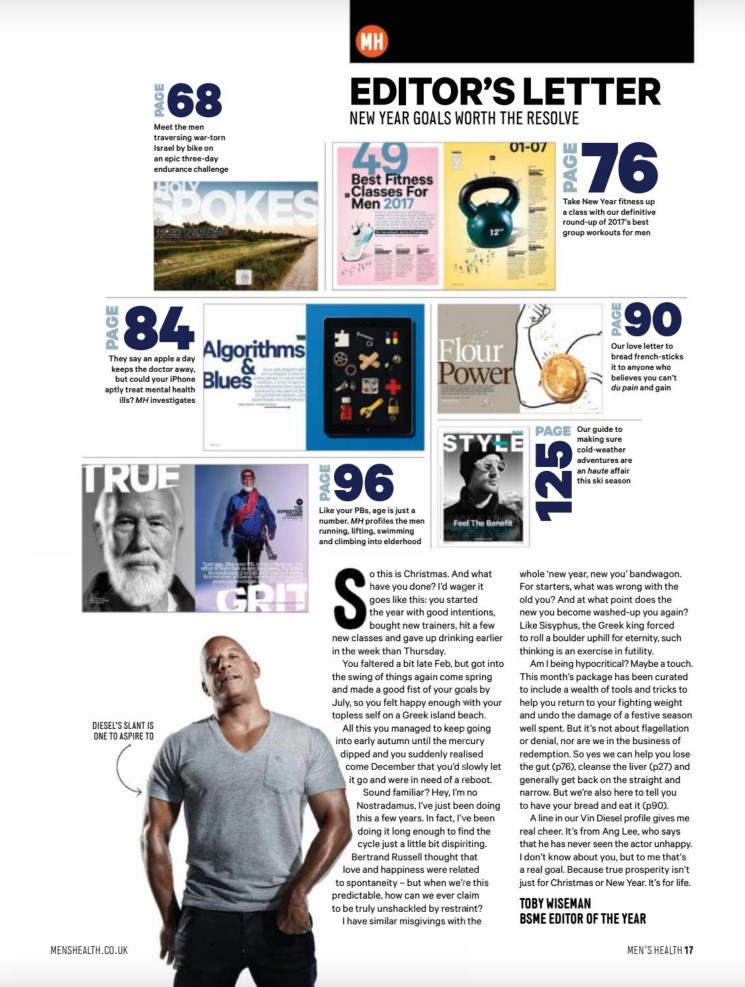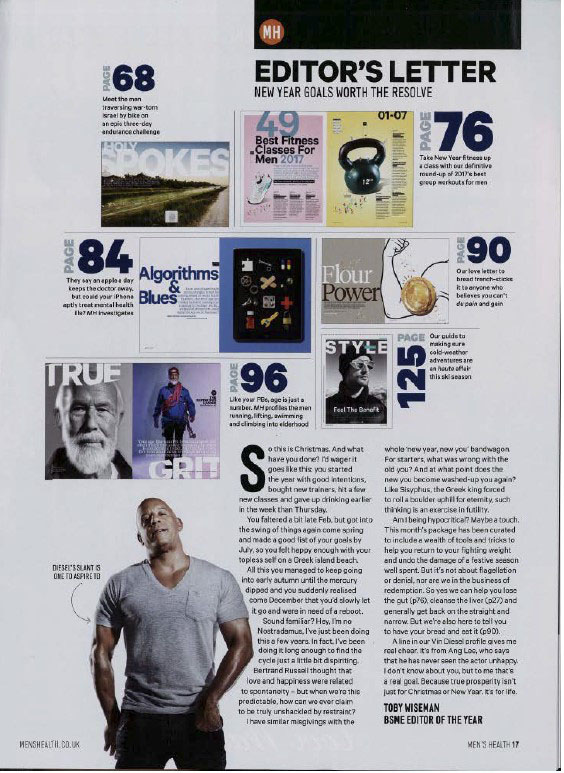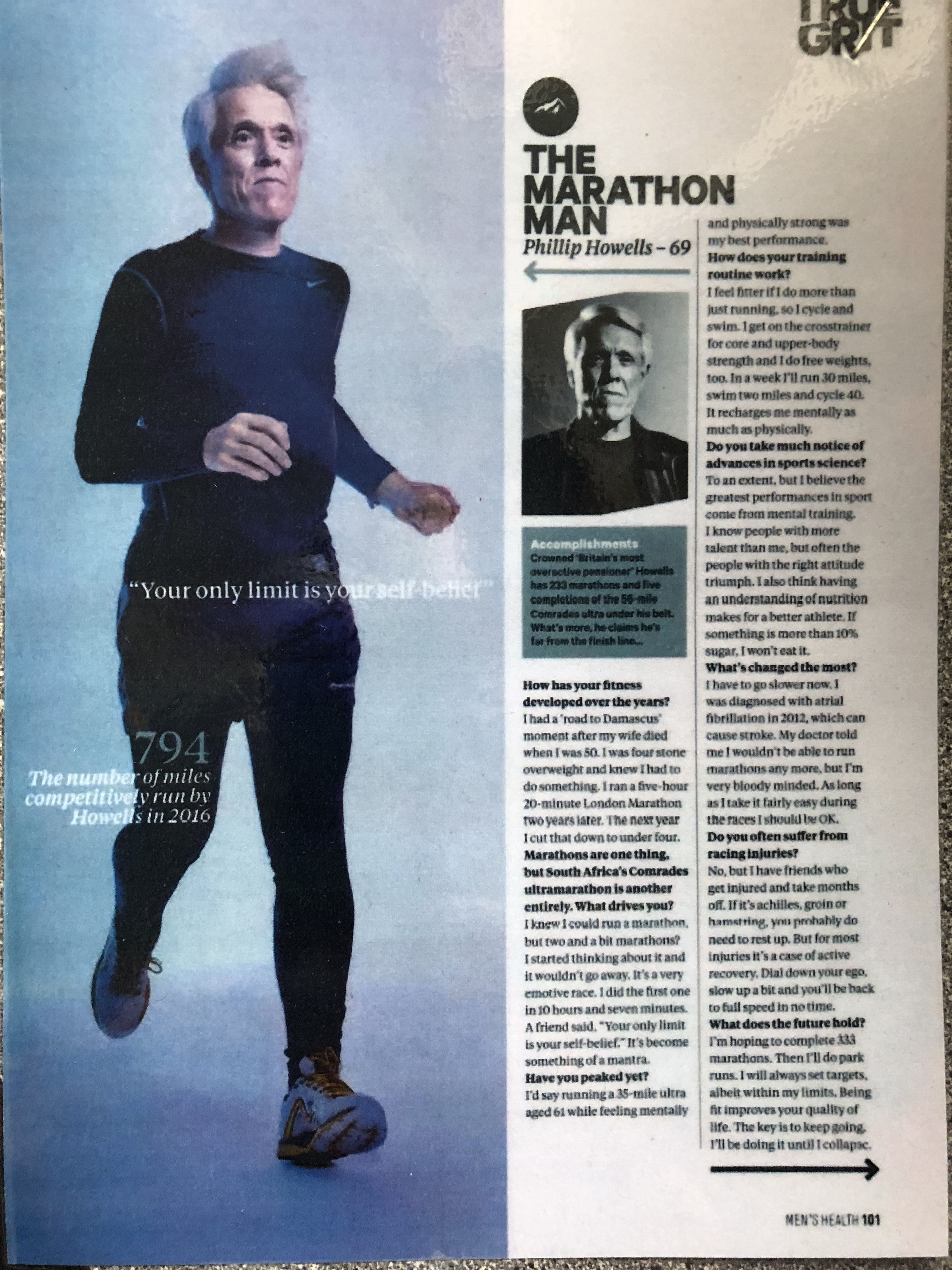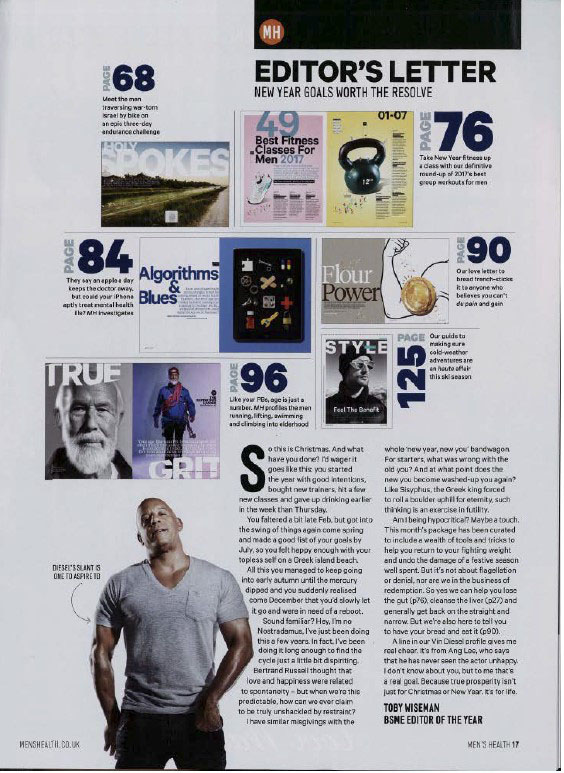semiotics, signifier, codes and conventions
dominant ideology of body image
vin diesel as the dominant signifier
genre – Steve Neale – genres all contain instances of repetition
Barthes – all narratives share structural ideas and features
print language
representation
countertype – old people being weak – 69 year old man running a marathon
radical or reactionary, positive and negative stereotypes – of men having to be string and fit and be a certain weight
The school of life how to be a man presents the cool man and the warm man, this links to Gauntletts notion that identity is fluid and negotiated. although this is not a theory we can see examples of the cool man and the warm man in men’s health. For example on page
- Positive and negative stereotypes
- Counter-types
- Misrepresentation
- Selective representation
- Dominant ideology
- Constructed reality
- Hegemony
- Audience positioning
- Fluidity of identity
- Constructed identity
- Negotiated identity
- Collective identity


Hearst Tower
Hearst Tower was the first occupied “green” commercial building in New York City to receive a LEED Gold Rating from the U.S. Green Building Council. In 2012, it earned a Platinum LEED Rating for Existing Buildings — the first building to receive both Gold and Platinum certifications. In 2018, Hearst Tower achieved a second LEED Platinum Rating, becoming the first publicly acknowledged, three-time LEED-certified building in the country.
One component of Hearst Tower’s environmentally friendly design is Icefall, a three-story waterfall that commands Hearst’s atrium and lobby, circulating recycled rainwater collected from the roof. The collection of rainwater saves 1.7 million gallons of water annually that would otherwise be runoff waste. In addition, Icefall cools and humidifies the lobby and atrium space, saving additional power.
Hearst RISE (Reinforcing Inclusion, Supporting Equity) is our commitment to our colleagues and our customers. In an inclusive culture, everyone must listen, learn and take action, and through training and education, outreach and recruiting, internships, affinity groups and more, we RISE together. Diversity strengthens innovation, creativity and collaboration; it is essential to our businesses, our content and our partnerships.
At Hearst, we believe in conducting good business, looking after our people and taking care of the communities we serve. From reporting on the frontlines to bringing viewers critical information to keeping pharmacists informed and joining together to volunteer at local organizations in our communities, social good is one of our core values.
Hearst Television is a national multimedia company with operations serving nearly three dozen U.S. cities, reaching one out of every five U.S. households. It delivers local and national news, weather, information, sports and entertainment programming via every available content-delivery platform.
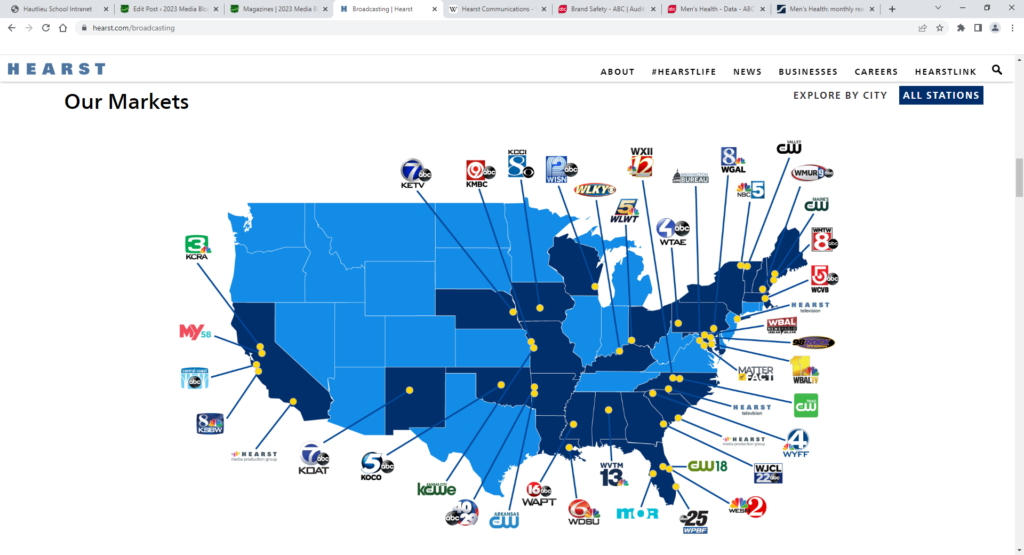
CEO of Hearst communications Steven R. Swartz
they want greater control over the physical and mental health in their life. Men’s health is talking to active men pursuing that lifestyle not all men


















